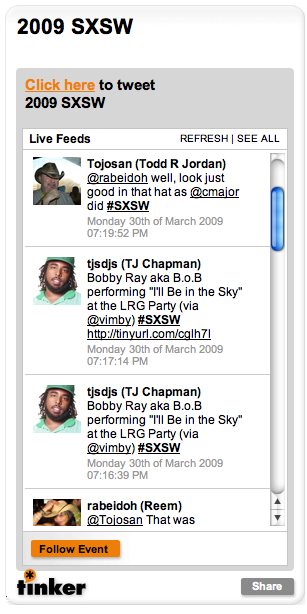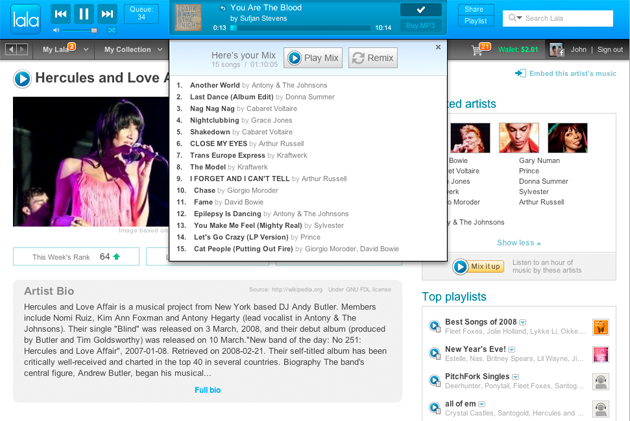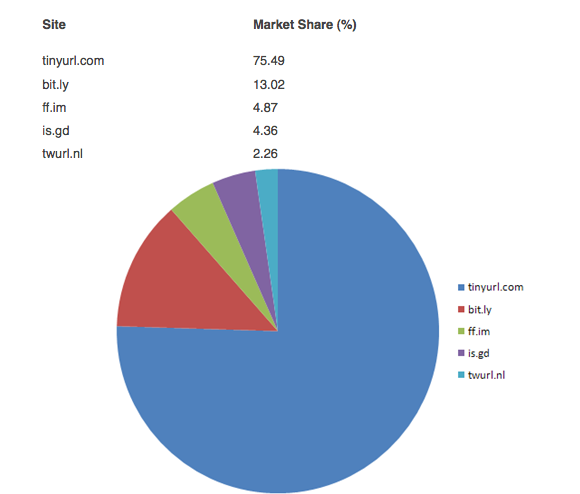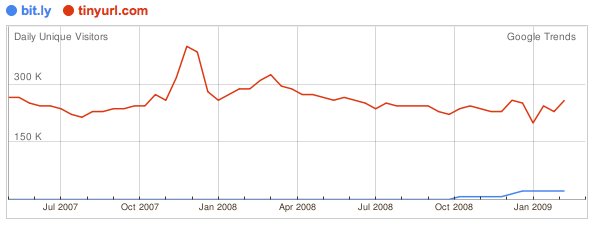The Latest from TechCrunch |  |
| Make Your Firefox Browser Look Better With Mozilla Labs’ Latest Skins Posted: 31 Mar 2009 08:43 AM PDT
Mozilla Labs is debuting new personas today - extensions that add lightweight themed skins to your Firefox browser - enabling you to personalize your user experience according to your mood without interrupting your browsing sessions. The Personas for Firefox add-on was first introduced in late 2007, but has now expanded to include hundreds of artist-created designs in a variety of categories, according to a blog post announcing the new sets. I like custom skins / themes and the fact that Mozilla is taking steps to make it easier for people to adjust the look and feel of their browser according to their mood, but somehow the announcement made me cringe a little (much like this Labs experiment did). I would rather see Mozilla focus on improving the speed and usability of its browser than offering its users ways to add eye candy, particularly now that the browser wars are heating up again. Firefox needs more innovation, not decoration. But then that’s just me. Some people love eye candy more than speed. Crunch Network: CrunchBase the free database of technology companies, people, and investors |
| Troubled SeeqPod Files For Bankruptcy Protection Posted: 31 Mar 2009 07:15 AM PDT
The company, which has raised $7 million in venture capital to date from undisclosed investors, is evidently doing this out of fear about the outcome of the multibillion dollar lawsuits it was slapped with by music labels like Warner Music, Capitol Records and EMI. We reported earlier that SeeqPod has become quite the target of the music industry, which went so far as going after developers who merely leveraged the SeeqPod API. They silenced Songbeat and forced Streamzy to put itself up for sale on eBay as a result. SeeqPod has developed interesting and powerful technology that is able to quickly crawl the web for playable media (MP3s, slideshow presentations, videos, etc.) and enables users to play it on-site. It doesn’t actually host any files on its servers, but the downside of the technology from a legal point of view is that the crawling engine picks up pirated music files from across the Web too, which is why the music labels are so eager to sue the company behind the service, especially since it spawned so many third-party services which use the engine as the basis of their online offerings. It’s worth noting that many search engines index copyrighted material too and are shielded from legal actions against them under the DMCA, so it seems rather arbitrary that the music industry is picking on SeeqPod specifically (the startup is huddling under the DMCA protection too). Maybe this is because of the fact that SeeqPod enables visitors to play files directly, and because it has reportedly been slow in setting up negotiation talks with the labels. SeeqPod recently started selling its source code to developers (price tag: $5,000) in the hopes of creating a legion of ‘mini-SeeqPods’ which could prove difficult for the music labels to kill one by one, but it’s unclear if this strategy has paid off so far, and yesterday’s Chapter 11 bankruptcy petition doesn’t bode well for the startup (or its investors, who are often wiped out in such proceedings). To be continued. Crunch Network: CrunchBoard because it’s time for you to find a new Job2.0 |
| Tinker Goes Live And Offers Micro-Payments To Micro-Bloggers Posted: 31 Mar 2009 06:28 AM PDT Micro-blogging is getting micro-payments. Tinker, the micro-blogging topic tracker from Glam Media which we covered in depth last night, is now live. The service tracks specific topics on both Twitter and Facebook, and allows these “event” streams to be republished as standalone widgets on blogs and other sites across the Web. I’ve embedded an example below showing the subsequent Tweets about our original article. With the launch, Glam Media is also creating a professional micro-blogging network for journalists and bloggers who want to sign up to cover specific events or topics via Twitter or Facebook. It will be called the Tinker Micro-Bloggers Network. This will be a vetted subset of Tinker users who are advertiser-friendly. Glam is working on a micro-payments system to share revenues with approved micro-bloggers from ads in their associated widgets and Tinker streams. All existing Glam Media publishers are automatically part of the Tinker Micro-Blogging Network. Glam also hopes to attract professional bloggers and journalists, who are pre-qualified (including any bloggers who are part of other blog advertising networks such as Federated Media, BlogHer, and TotalBeauty). Others can apply to be part of the network as well. In order to make advertisers more comfortable with the concept of associating their brands with these micro-conversations, Tinker will offer a “safe” mode so that ads never appear near obscenities or specified keywords. Event moderators can also use the filters to block specific keywords or people from appearing in their curated stream.
Crunch Network: CrunchBoard because it’s time for you to find a new Job2.0 |
| Cellmania Gives Carriers Their Own Android Marketplaces Posted: 31 Mar 2009 06:00 AM PDT Cellmania, a company that builds and licenses the software that drives many mobile phone stores, has launched a new platform called the Android Content Storefront for Android phones that will allow carriers and manufacturers to install their own, customized app stores on Android phones. While Android phones already offer Google’s official app store, Cellmania CEO Ronjon Nag says that many carriers and manufacturers are looking for a way to offer their own stores, where they can feature localized content and sell media like music, ring tones, video, and graphics (none of which can currently be sold through Google’s store). The store also supports a variety of different payment plans, including subscriptions, charging purchases to the user’s phone bill, and ‘in-app’ purchases, which allow users to purchase virtual goods and other services from directly within the app. As an added bonus to developers, Cellmania’s storefront includes software that can convert J2ME applications (which are common on many other mobile phones) into Android executables. Cellmania has a long history with a number of major cell phone carriers and manufacturers, which puts it in a position to have its white-labeled storefronts come as default applications for some Android phones. That said, Cellmania’s third party app stores would not be Android’s first - other companies like Handango have offered their own markets too. Crunch Network: MobileCrunch Mobile Gadgets and Applications, Delivered Daily. |
| Google’s New VC Fund Lacks Domain Name Posted: 31 Mar 2009 04:43 AM PDT
We’re not sure if this is an oversight or if Google has actively tried but failed to claim ownership over the domain name, but the fact is googleventures.com was first registered back in 2004, and that it’s currently supposed to expire in June of this year. Update: as reader George Kirikos correctly points out, Google has filed a UDRP (Uniform Domain-Name Dispute-Resolution Policy) case for the domain name. See the National Arbitration Forum website for details (case number 1249421). Since the WHOIS information at this point is unprotected, hence public information, we know that the domain name was registered by a James Hung from Connecticut. Hung is the CEO of The Hive, a “global venture consulting firm comprised of business and technology gurus, entrepreneurs, and strategic partners in the Americas, Europe, Asia, and Africa.” The domain name is not being forwarded to the firm’s website, but only displays an image saying that site is currently unavailable. We’ve contacted both Hung and Google for comment.
In case you’re wondering, Google’s Terms of Service prohibit the use of “any of Google's trade names, trade marks, service marks, logos, domain names, and other distinctive brand features”, so this is clearly a violation. Cease & decist in 3, 2, 1 … Crunch Network: CrunchBoard because it’s time for you to find a new Job2.0 |
| Who Is This Sassy Lauren, She Of the Cheap HP? Posted: 31 Mar 2009 03:21 AM PDT  Lauren AKA the girl from the Windows commercial is really Lauren De Long, a SAG-eligble actor with special skills including cheerleading, stage combat, and ear prompting. Giz and TechFlash tracked her down and she informed them that she is under NDA for her involvement in Microsoft's laptop taste test. So she wasn't an average girl picked up off the street, BangBus style [Editor's Note: DO NOT DO A SEARCH ON THIS], to purchase a laptop for the Redmond marketing department. Who knew? Hell hath no fury like a fanboi scorned so a number of sites have already offered Ms. De Long a great MacBook in place of the poorly reviewed HP she purchased. Lauren AKA the girl from the Windows commercial is really Lauren De Long, a SAG-eligble actor with special skills including cheerleading, stage combat, and ear prompting. Giz and TechFlash tracked her down and she informed them that she is under NDA for her involvement in Microsoft's laptop taste test. So she wasn't an average girl picked up off the street, BangBus style [Editor's Note: DO NOT DO A SEARCH ON THIS], to purchase a laptop for the Redmond marketing department. Who knew? Hell hath no fury like a fanboi scorned so a number of sites have already offered Ms. De Long a great MacBook in place of the poorly reviewed HP she purchased. |
| Reminder: Prague-Crunch ][ Meet-up is April 11 Posted: 31 Mar 2009 02:12 AM PDT
Crunch Network: CrunchBase the free database of technology companies, people, and investors |
| Facebook Hooks Up With Adobe For Richer Social Applications In Flash Posted: 31 Mar 2009 01:37 AM PDT
Flash has been supported since the launch of Facebook Platform in 2007 through tags, embedding Flash in Feed stories, and multiple client libraries, which have helped developers make Facebook API calls directly from ActionScript (see example on the Red Bull website). But Facebook felt the exisiting ActionScript client libraries were not up to par, so it teamed up with Adobe to tweak the open source version to support all Facebook APIs and add some features to better support authentication for both Facebook Platform and Facebook Connect. After the PHP, JavaScript and iPhone client library, the all new ActionScript 3.0 Client Library for Facebook Platform is now the fourth officially supported client library for the Facebook Platform. The code can be downloaded here. Facebook and Adobe Systems will share more about the new partnership on April 2 at a San Francisco event.
Crunch Network: CrunchBoard because it’s time for you to find a new Job2.0 |
| Google Ventures Opens For Business, Investment Scope Covers Just About Anything. Posted: 31 Mar 2009 01:14 AM PDT
The fund’s FAQ says they’ll invest in just about any type of startup (”consumer Internet, software, hardware, clean-tech, bio-tech, health care and others”) and they’re willing to invest just about any amount you might need (”from seed funding to tens of millions of dollars, depending on the stage of the opportunity and the company’s need for capital”). It’s not exactly what you’d call a tight investment focus, but hey, it’s not like they need to worry about keeping limited partners happy so they can raise the next fund. They’re also happy to invest along side other venture firms and strategic partners. No other commercial arrangement, such as a partnership, is required (so no, you don’t have to build your service on App Engine). This is, Google says, their primary engine for venture-style investments going forward. The FAQs also say the fund will be actively involved with investments (”We believe that our active involvement will help to create value, so we look to work with management teams to maximize the impact of our investment and their technology or innovation”). That may be somewhat over-ambitious, depending on how many investments they actually make. There are only two partners after all. Is this a good investor for your startup? The cachet of having Google behind you is great for marketing. But if you think you have the next new Google-killer search idea, you may want to bake it a while before showing the technology to these guys. Crunch Network: CrunchGear drool over the sexiest new gadgets and hardware. |
| Tinker Gives Twitter Its Long Awaited Events Firehose Posted: 30 Mar 2009 07:59 PM PDT Over a year ago Fred Wilson wrote about the need for a Twitter events firehose - a place where users could input a handful of keywords collectively referred to as an ‘event’, which could be used to monitor current news as it happens in near real-time. Tomorrow morning, he’ll get his wish when Glam Media launches a new service called Tinker to the public. As its popularity has skyrocketed, Twitter has quickly become an indispensable tool for nearly any event, ranging from breaking news stories like the Mumbai terrorist attacks to the broadcast of the most recent episode of Dancing With The Stars. Major earthquakes are often reported by hundreds of Twitter users a matter of seconds after they’ve occurred. Most people rely on Twitter Search and hashtags to keep tabs on these events, but these aren’t particularly efficient or user friendly. There have been a number of sites that have offered one-off Twitter pages for events, like the Presidential election and The Oscars. These are great, but there still hasn’t been an easy way to create similar pages for smaller events or breaking news stories. Tinker solves this problem, allowing users to build these pages in seconds. And it’s very well done, with a polished intuitive interface that may well make the site the de facto standard for Twitter events. At a high level, each Tinker event can be described as a persistent search for multiple keywords on Twitter. Each Event is associated with one or more terms, which Tinker then searches for across all Tweets and presents in a single stream. For example, a Tinker Event for March Madness might present tweets that included the terms ‘NCAA’, ‘Basketball’, and ‘Final Four’. At launch Tinker is going to allow normal users to create their own ‘Events’, but they’ll only be able to search for one key word, hashtag, or phrase at a time (they can also choose terms that they’d like to exclude). Trusted partners, such as those that are running an event, will be able to access a more robust interface, where they can include multiple queries in a stream (normal users will eventually be able to use the same functionality). And while these queries are currently limited to Twitter and FriendFeed for now, it wouldn’t be surprising if we saw Tinker open up to monitoring other services in the future.
The homepage is very well done, but Tinker’s real power will likely lie in its ability to go viral with widgets. After creating an Event, users can share the event’s feed using an embeddable widget, which they can place on their webpage or blog. These widgets allow users to both view the feed of an event and to submit their own messages, which can then be sent to Twitter and eventually sites like Facebook and FriendFeed. From an advertising perspective the widgets are also appealing, as they allow brands to pick out ‘trusted’ streams (for example, one with tweets only pertaining to the Oscars) that they’d like their ads to appear next to. Tinker will also post feeds created by trusted partners on its homepage, allowing the most established events to get more traction. Some Twitter veterans might argue that Tinker isn’t really necessary to monitor an event - after all, hashtags originated for largely the same purpose. But hashtags come with their own issues (namely, you have to figure out exactly which hashtag everyone is using), and for Twitter novices hashtags can be a pretty difficult concept to grasp. On Tinker, they don’t have to deal with any of those issues - they simply sign on and click on the topic that they’d like to read about. Aside from its text streams, Tinker has a number of very cool tools that can be used to monitor events. My favorite is Historical Trends, an interactive graph that plots out how ‘hot’ a given event is over time relative to any other event in the system. Users can watch how the ‘Lost’ event skyrockets to the top of the Twitter conversation on Wednesday nights, only to drop sharply the next day. Or they can watch as the SXSW event slowly faded from prominence to obscurity over the last week. It’s an impressive visualization, and one that could easily be used to map other keywords, like the name of a startup over time. Tinker will be launching tomorrow morning to the public, and we’ll be sure to let you know as soon as it does.
Crunch Network: MobileCrunch Mobile Gadgets and Applications, Delivered Daily. |
| Lala Gets A Fresh Coat Of Paint, Still Rocks Posted: 30 Mar 2009 07:55 PM PDT Tonight music-streaming service Lala will be rolling out a number of improvements to its homepage and integrated music player. While the site has had a clean feel since its relaunch last October, it has also been a bit spartan - users had to navigate to various links to find their playlists and songs, and while it looked good it wasn’t as functional as it could have been. The redesign builds on the site’s persistent music player, which sits at the top of the browser window no matter where on Lala’s site they go. Users can now view a pulldown-menu with a list of songs, and there’s a similar pull down menu for playlists. Another new addition is the ‘Mix’ button, which allows users to generate a list of similar songs to the one they’re current playing (it is similar to the Genius feature found on iTunes). The feature is great for exploring new songs, allowing users to get exposure to a variety of music they haven’t heard while still retaining control over what they’d like to hear next (radio services like Pandora, while great for discovery, can still be frustrating because they only allow users to skip a limited number of songs). All in all, it’s a more usable interface, and it also looks much slicker. Other additions to the site include a revamped user profile page and improvements to artist homepages. These are all great, but we’re still itching for the day we’ll get to use Lala’s upcoming iPhone app.
Crunch Network: MobileCrunch Mobile Gadgets and Applications, Delivered Daily. |
| Jonathan Miller, Who’s Taking Over MySpace, Doesn’t Have A MySpace Profile Posted: 30 Mar 2009 05:53 PM PDT
We’re big believers in company executives eating their own dog food, and more often than not they do. But MySpace is a different story - every once in a while they announce new executives who don’t have a MySpace page at all. It’s always fixed promptly, but it’s a bit of an embarrassment. News Corp., MySpace and Miller all either refused to comment or haven’t responded to our inquiries. My guess is the MySpace team will be creating one for Miller shortly, assuming he doesn’t in fact have one. He could have an anonymous profile, but from what we’ve heard he doesn’t. We love Miller and think he’s an awesome choice for the huge job he’s about to take on. And now’s the time for him to start using MySpace. Crunch Network: MobileCrunch Mobile Gadgets and Applications, Delivered Daily. |
| If bit.ly Is Worth $8 Million, TinyURL Is Worth At Least $46 Million Posted: 30 Mar 2009 05:07 PM PDT
In a world where everything is being jammed into 140 characters or less, shorter is better. That goes double (or is it half?) for lengthy URLs. So-called URL shortening services are increasingly becoming indispensable to anyone who uses Twitter. It is the only practical way to share links on the service. Today, one of these URL shortening services, bit.ly, raised $2 million, sparking the question: How much are these things actually worth? Nobody really knows. But here is some fun math. Assuming bit.ly sold 20 percent of its shares to its new investors (the O’Reilly Alpha Tech Fund, Mitch Kapor, and Howard Lindzon), that would imply an $8 million pre-money valuation ($10 million post-money). Its market share of shortened links, as calculated by Tweetmeme, is only 13 percent. The biggest URL shortner out there is actually TinyURL, which commands a 75 percent share. So by that metric, if bit.ly is worth $8 million, TinyURL should be worth at least $46 million (8/13 X 75 = 46.15). Yes, I am making up these numbers, just like the investors do. But wait. Bit.ly seems to be shooting up like a rocket, while TinyURL may have plateaued. Why is bit.ly growing so much faster? One big reason is because it creates even shorter URLs than TinyURL does by about five characters (http://bit.ly/ versus http://tinyurl.com/). Don’t laugh. Every character counts. Bit.ly also offers better analytics and tracking tools on the backend. Don’t get too caught up in the site traffic growth figures either, though. Traffic to http://bit.ly/ and http://tinyurl.com/ cannot be trusted as reliable proxies for usage because heavy users don’t go to the corresponding websites. They use desktop clients or browser based tools instead which incorporate one service or the other. For instance, TweetDeck (a popular Twitter client) uses bit.ly as its default shortener. The bit.ly service itself is a spin-off from Betaworks, which is also an investor in Tweetdeck (and in Twitter). See how it works? How any URL shortener is supposed to make money is still unclear. The links themselves act as pass-throughs to the original sites. TinyURL has slapped some Google ads on its site and bit.ly doesn’t even bother. The data each service is collecting might be valuable and could be packaged in various ways to brand marketers or other corporate buyers . . . perhaps. Or more likely, these things become features of other services. Already Digg is working on its own URL-shortening toolbar wrapped into its service, and Stumbleupon is working on su.pr, which is even shorter than bit.ly!
Crunch Network: CrunchGear drool over the sexiest new gadgets and hardware. |
| AirCoaster iPhone App Turns The Stock Market Into A Scary Ride Posted: 30 Mar 2009 03:42 PM PDT
The stock market has been a wild ride the past 12 months. If you don’t feel sick already, you can actually turn the ups and downs of the stock market into a virtual roller coaster. Ziconic, the developers of AirCoaster 3D, a high speed 3D roller coaster app for the iPhone, has turned the Dow Jones and Apple stock charts into roller coaster tracks that users can download and ride. The steep decline of the Dow Jones index makes for an exhilarating ride . But Apple’s more volatile stock makes for an even more thrilling up-and-down roller coaster track. The app lets you visually experience every twist, turn, and corkscrew, within a 360-degree panoramic background. (Once you choose a ride, though, you can only control the view, not the actual ride). You can choose to ride an auto-generated track that changes with each ride. The AirCoaster 3D, which costs $0.99, lets you design your own tracks as well with sound effects and themes via an interactive multi-touch track editor. And you can download tracks created by others. (In fact, the Dow Jones and Apple tracks don’t come with the app, you have to download them from the community tracks tab). Stock charts make for excellent virtual roller coaster tracks. But which stock chart would be the most fun to ride? One rule of thumb: the fun of the roller coaster ride is the inverse of the fun of owning the stock. Here’s a video showing the Dow Jones ride on an iPhone: Crunch Network: CrunchGear drool over the sexiest new gadgets and hardware. |
| Microsoft To Shutter Encarta, Read All About It On Wikipedia Posted: 30 Mar 2009 02:12 PM PDT
Microsoft is preparing to shut down Encarta, the digital encyclopedia it first launched in 1993 as a direct competitor to old reference standbys like Encyclopedia Britannica. The encyclopedia, which for years was based on optical media and eventually made its way to the web too, grew quickly in the mid to late 90’s as a reference guide that was more convenient than book-based encyclopedias and was available for a tiny fraction of the price. According to its FAQ, Encarta’s web sites will be discontinued on October 31, 2009 (Except for Japan, which has until December 31, 2009). Microsoft will also stop selling the Encarta products by June. From the FAQ:
In the 2000’s Encarta’s popularity died out, largely due to the incredible growth of Wikipedia, the free web-based encyclopedia. Wikipedia is updated by a community of users from around the world, and is far more efficient than tradional encyclopedias and their online counterparts, which are edited in-house. In 2005 Encarta tried to take the middle ground by allowing users to submit suggestions for article updates, but these were not integrated into articles until they had been approved by Encarta editors. For a full history of Encarta, be sure to check out its comprehensive Wikipedia entry, which has already been updated to reflect Encarta’s shutdown. Encarta’s entry on itself doesn’t mention anything about its demise, and actually seems to have less information than the Wikipedia article. Via Ars Technica Crunch Network: CrunchGear drool over the sexiest new gadgets and hardware. |
| Habbo Pulled In $74 Million In Real Revenues Last Year From Virtual Goods And Advertising Posted: 30 Mar 2009 12:57 PM PDT
Convincing people to pay for nothing, or rather for things with zero marginal cost to produce, is a great business model—in theory. In practice, there are so few examples to point to, and most of them are overseas, such as Helsinki-based teen virtual world Habbo. The virtual world’s parent company, Sulake, today reported some selective financial and user data for Habbo. In 2008, Habbo’s revenues rose 20 percent to $74 million (50 million Euros), and posted positive operating cash flow (EBITDA) of $7 million (4.8 million Euros). It was even slightly profitable on a net income basis as well, however the company chose not to disclose that exact amount. Perhaps the bulk of revenues are being plowed back into global expansion or to pay the salaries of Habbo’s 300 employees (yes, 300). But its sub-10% margins so far are underwhelming. And Habbo is supposed to be one of the shining examples of a real business based on a virtual economy. It also makes money from advertising, but the vast majority of its revenues comes from in-world gifting and virtual vanity items. Habbo says it attracts 11.5 million unique visitors a month (based on internal Google Analytics data) and that more than 120 million Habbo characters have been created. How many have been abandoned, though, is unclear. ComScore estimates 8.7 million worldwide unique visitors in February, down from 9.3 million in December. By year-end 2008, the global Habbo community had also grown in activity to 121 million Habbo characters with the number of returning visitors increased by more than 40 percent. Traffic to the teen virtual world also reached an all-time high in December, with more than 11.5 million unique visitors. Most of that is in other countries than the U.S., where interest seemed to peek in October with 2 million unique visitors. In February, the number of U.S. unique visitors was down to 1 million, according to comScore.
Crunch Network: CrunchBoard because it’s time for you to find a new Job2.0 |
| CrunchGear Presents Slow-mo Reel 2: Electric Boogaloo Posted: 30 Mar 2009 12:30 PM PDT  You asked for it. Actually, you asked for girls washing cars. But you have to understand that this year in Seattle, when it hasn't been raining, it's been hailing. So just be satisfied that it's not entirely bearded guys high-fiving each other — although I threw in a little of that for those of you who secretly liked it. It's a sort of slow-motion smorgasbord. Like the last reel, this was shot on the Casio Exilim FC-100, the review for which is publishing at the same time as this. I highly recommend both the camera and the lengthy review, the former because it's good and the latter because I wrote it. You asked for it. Actually, you asked for girls washing cars. But you have to understand that this year in Seattle, when it hasn't been raining, it's been hailing. So just be satisfied that it's not entirely bearded guys high-fiving each other — although I threw in a little of that for those of you who secretly liked it. It's a sort of slow-motion smorgasbord. Like the last reel, this was shot on the Casio Exilim FC-100, the review for which is publishing at the same time as this. I highly recommend both the camera and the lengthy review, the former because it's good and the latter because I wrote it. |
| Harry Potter Author JK Rowling Attacks Scribd For Pirated Content (Updated) Posted: 30 Mar 2009 11:45 AM PDT
Famed Harry Potter author JK Rowling is taking on Scribd, the free document sharing service that has been likened to a “YouTube for documents”. Rowling and her publisher have discovered that a number of her books were being illegally shared on the site, after being pirated and uploaded by Scribd members. According to The Times, Rowling’s publishers (along with those representing author Ken Follett) were “battling last night to get free copies of their novels removed” from the site. At this point it’s unclear just how much ‘battling’ is really going on - Rowling’s lawyer has said that Scribd is “quite helpful and they act immediately, but they won’t police it themselves.” Rowling and her representatives are concerned that Scribd is not proactively searching its database for pirated content, instead waiting for authors to submit complaints before pulling content down. Scribd says that it has an automated system that can prevent content that has previously been marked as pirated from being uploaded again, but given that it apparently isn’t even catching Harry Potter novels (which are likely among the most pirated books ever), I have a hard time believing the system is working very well. Rowling isn’t the first author to attack Scribd for piracy issues, but her international acclaim makes her voice much louder than most. Her attack is a blemish on the site’s reputation, and perhaps even worse, it will likely have aftershocks - now that Scribd’s piracy issues are receiving widespread attention, more authors and publishers who weren’t even aware of the site may begin to discover that their content is being illegally hosted as well. That said, not all authors and publishers are anti-Scribd. The site has recently been making headway with other authors and publishers who are legally hosting their content on the site as a means to increase exposure. And such piracy complaints are not unique to Scribd - other sites that host user-generated content (most notably YouTube) have had to deal with the same issues. Update:
Crunch Network: CrunchBase the free database of technology companies, people, and investors |
| Posted: 30 Mar 2009 10:39 AM PDT We’re always happy to give a wide berth to people pulling April Fools pranks, but even so it’s pushing it to do it on March 27. If you go that early, you need to be side-splittingly funny or earn our disdain until we’ve forgotten all about it. The Funded’s Adeo Ressi is now confirming that the shutdown notice he posted last week is part of an April Fools joke. He was unavailable for comment, he says, because he was “in remote Utah at a wedding.” Weddings are always an excuse for being offline, I guess, so we’re forgiving The Funded for going dark on the situation. And a wedding in Utah must be fascinating. But as to the hilarity of the joke itself, well that’s up to The Funded’s users to decide. We enjoyed last year’s April Fools joke that involved the launching of a new site that let venture capitalists review founders that pitched them (from First Round Capital).
Crunch Network: MobileCrunch Mobile Gadgets and Applications, Delivered Daily. |
| MySpace Embraces Microsoft Platforms For Mobile And Web Applications Posted: 30 Mar 2009 09:04 AM PDT
The upcoming application will be created by MySpace in conjunction with Microsoft developers, and optimize the user experience for owners of devices running the latest version of Windows Mobile (6.1, which was introduced in April 2008). The company says it currently has 20 million mobile users and is focused on developing applications for all platforms, including the iPhone, Android, Blackberry, Palm, Nokia, etc. As MobileCrunch reported earlier this year, MySpace anticipates 50% of their total traffic to come from mobiles within the next few years, which is why it has recently launched a redesigned mobile website as well (see MC post for details). All basic functionalities for social interaction with MySpace friends are said to be included in the application (also see screenshots below), but more specific details are bound to emerge sooner or later. The app is supposed to pop up in Windows Marketplace for Mobile early fall 2009, and LG will be pre-loading the utility on its future WiMo devices (slated for shipping in the second half of 2009).
More significant in my opinion is the announcement regarding Silverlight, Redmond’s answer to Adobe’s Flash / Flex rich internet application development platform. MySpace is going to include the Silverlight runtime in its Open Platform and offer a jointly built SDK, leveraging the JavaScript OpenSocial container used by most of the applications that run on the social networking service. Coincidentally, OpenSocial was created by MySpace in conjunction with Google, and both companies have a representative on OpenSocial Foundation’s Board. Silverlight developers now have the ability to build OpenSocial applications on MySpace’s Open Platform and make the user experience for its members a little richer. MySpace and Microsoft will be presenting a joint session at the Web 2.0 Expo on Silverlight on the MySpace Open Platform, which will take place on Thursday, April 2nd at 1:30pm PST. Crunch Network: CrunchBoard because it’s time for you to find a new Job2.0 |
| You are subscribed to email updates from TechCrunch To stop receiving these emails, you may unsubscribe now. | Email delivery powered by Google |
| Inbox too full? | |
| If you prefer to unsubscribe via postal mail, write to: TechCrunch, c/o Google, 20 W Kinzie, Chicago IL USA 60610 | |





 Now that
Now that 


 Not to be outdone by
Not to be outdone by 





 As far as we can tell, the guy who’s going to be taking over MySpace along with the rest of News Corp.’s digital assets doesn’t actually use the site itself. We cannot locate a MySpace profile for
As far as we can tell, the guy who’s going to be taking over MySpace along with the rest of News Corp.’s digital assets doesn’t actually use the site itself. We cannot locate a MySpace profile for 







 Two Microsoft-related announcements coming from social networking giant
Two Microsoft-related announcements coming from social networking giant 
No comments:
Post a Comment